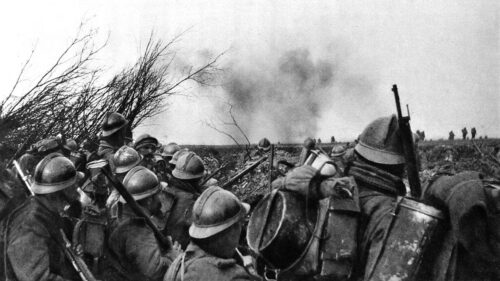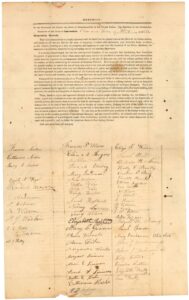
The Battle of Verdun 105 Years Later
February 21 will mark the 105th anniversary of the commencement of the Battle of Verdun, which began with a German offensive against the French fortress at Verdun and its surrounding fortifications. These French positions created a salient—an east-facing bulge—into German lines that, to the Germans, presented both a threat and an opportunity. Verdun threatened German communication lines to the east; but the fact that it did so, from such a formidable position, offered the possibility of a fight the French could not avoid if their hand was forced. German planners envisioned a massive battle that would draw in all the best of what France could muster. The ensuing defeat would deliver the fortress into German hands, land a roundhouse blow to French morale, and, perhaps most importantly, seriously attrit French forces. In fact, German Army Chief of Staff Erich von Falkenhayn declared his intent to bring about a battle that would “bleed France white.”
The battle was preceded by intense, short-term artillery attacks at various points along the front, meant both to soften French defenses before the German infantry advance and to draw the French into committing more troops to the region. Although this battle had a significant geographic dimension—in the importance of the position of the fortress and its surrounding associated defensive works—its aim was really to force France to commit troops so that Germany could decimate them. Targeting Verdun was simply a means to an end—that end being an intentional battle of attrition.
What ensued was very much that, and for the first few months both sides committed massive numbers of men and vast quantities of supplies and arms to the struggle. By summer, however, British preparations for what would be the hideous fight over the Somme were well underway, and Russian advances to the east served to draw Germany in several directions at once, weakening her ability to concentrate forces at Verdun and successfully complete the German plan.
By the end of 1916, after some 10 months of fighting, the lines around Verdun were largely the same as they had been in early February, albeit with the addition of several villages completely destroyed, around 300,000 dead from both sides, and over 700,000 total casualties (to include the dead). Beyond that, some 10,000,000 rounds of ammunition are estimated to remain in French soil today, and around 40 tons of it—some still live and dangerous, including chemical rounds—are removed annually, even today.
The depiction of the First World War as a bloody slog, as a war of grinding attrition, wherein men were used up by the thousands for little or no gain, came into being from battles like Verdun which, watched from afar by Americans, were reminders of what seemed to be the wisdom of President Woodrow Wilson’s policy of neutrality, which he declared on 4 August 1914 in response to the initiation of hostilities in Europe.
In an attempt to remain impartial in thought and action, Wilson believed that openly trading with any and all countries involved in the war would insulate America from being associated with any one country or alliance, thus keeping America out of the war.



